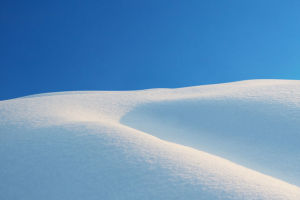Zebra is the general name of the three extant species of the genus Equus in the order Odd-hoofed horses. No animal is more distinctive than a zebra's fur. Zebras have the same stripes as human fingerprints - no two are exactly the same.
Zebras are only found in Africa. Eastern, central and southern Africa is the main habitat for plains zebras, which are striped or unstriped from leg to hoof.
There is another type of zebra in East Africa. It has the largest physique, long and wide ears, and narrow and dense stripes all over the body, so it is called Grevy's zebra.
South Africa is also inhabited by the mountain zebra, which, unlike the other two species, has long, donkey-like ears. Except for the abdomen, the whole body is densely covered with wide black stripes, and the male has a wattle on the throat.
The stripes on the zebra's body are beautiful and elegant, which is one of the main marks for mutual identification among the same species.
More importantly, it forms a protective color that adapts to the environment, as an important defense method to ensure its survival.
But the role of zebra patterns is a matter of great debate. Darwin and Wallace, who proposed the theory of evolution, debated why zebras have lines in the 1870s.
According to a 2015 review by National Geographic, the academic community has so far produced about five discourses.
These include protecting colors, confusing predators, helping zebras recognize each other, reducing body temperature, and repelling mosquitoes.
American biologist Jared Diamond found that if you want to domesticate an animal, you must meet six elements, none of which are indispensable.
1. The feed must be cheap, so it is possible to raise them on a large scale.
2. The growth rate must be fast, and the breeding cycle must be short, which is beneficial to the breeder.
3. Must be able to reproduce under captive conditions. The breeding conditions of some animals are very special, and it is difficult to achieve captive breeding. For example, the complex breeding ritual of cheetahs requires running and chasing for several kilometers for several days.
4. The temperament must not be too fierce.
5. They must not be too cautious. Some animals become very neurotic when startled. For example, antelopes run away in case of trouble, and it is almost impossible to be domesticated.
6. They must be a group animal, and there must be a leader and hierarchy in the group. In this way, when humans control the leader, they can control the entire herd.
However, zebras are very ferocious. Galloping and fighting on the African grasslands, zebras naturally have their own special survival advantages.
Fighting with life at any time in daily life, zebras are naturally chosen to be ferocious and powerful. The kicking force of the zebra's hind hooves is so powerful that even the lion, the king of the prairie, is terrified. There have been many cases of zebras killing lions.
If a lion with a disadvantaged size attacked from behind, the zebra immediately responded with a hooves kick. As a result, lions who do not know what to do are often kicked to the head, which directly leads to death, or they are kicked to fracture their jaws, and finally starve to death.
And male zebras in estrus are uncontrollable beasts. At this time, when a male zebra meets s female zebra, he will rush over with a tenacious momentum regardless of everything.
According to statistics, zebras attack humans more often than bis cats such as tigers.
Zebras are very easily startled. When they hear the slightest movement, they will run away in fright, and they are very difficult to control. And zebras are more like donkeys than horses, and they don't run as fast. At the same time, zebras are highly myopic familial and often run into trees while running.
These are the reasons why zebras are so difficult to tame. Has anyone successfully domesticated zebras? The answer is yes. But so far, the world has domesticated less than 20 zebras, and they have cost us a lot of effort. So, just let these cool zebras roam freely on the African savannah.


